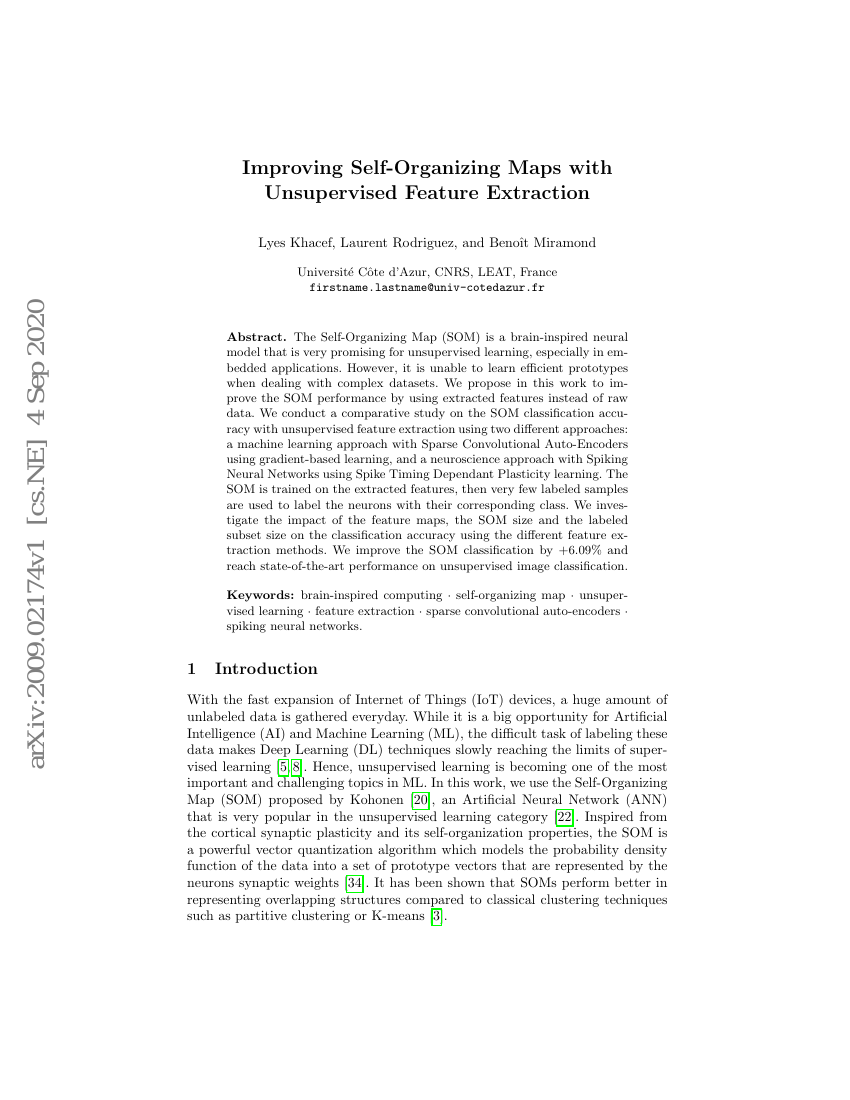Command Palette
Search for a command to run...
Lyes Khacef; Laurent Rodriguez; Benoit Miramond

Abstract
The Self-Organizing Map (SOM) is a brain-inspired neural model that is very promising for unsupervised learning, especially in embedded applications. However, it is unable to learn efficient prototypes when dealing with complex datasets. We propose in this work to improve the SOM performance by using extracted features instead of raw data. We conduct a comparative study on the SOM classification accuracy with unsupervised feature extraction using two different approaches: a machine learning approach with Sparse Convolutional Auto-Encoders using gradient-based learning, and a neuroscience approach with Spiking Neural Networks using Spike Timing Dependant Plasticity learning. The SOM is trained on the extracted features, then very few labeled samples are used to label the neurons with their corresponding class. We investigate the impact of the feature maps, the SOM size and the labeled subset size on the classification accuracy using the different feature extraction methods. We improve the SOM classification by +6.09\% and reach state-of-the-art performance on unsupervised image classification.
Code Repositories
Benchmarks
| Benchmark | Methodology | Metrics |
|---|---|---|
| unsupervised-mnist-on-mnist | Self-Organizing Map | Accuracy: 96.9 |
Build AI with AI
From idea to launch — accelerate your AI development with free AI co-coding, out-of-the-box environment and best price of GPUs.